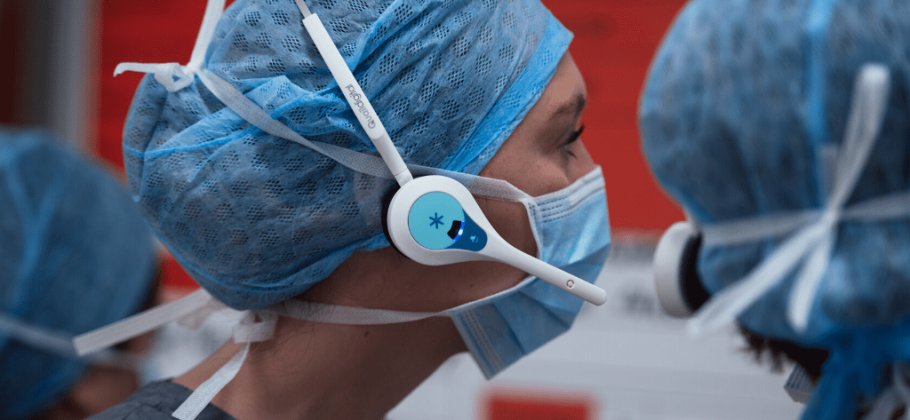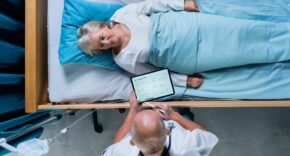The rapid evolution of technology and devices, methodology and best practice, continues to transform the Operating Room (OR). Advances in 3D imagery, precise robotics, procedures undertaken wearing isolation suits and a wide range of day-to-day procedures need effective interaction between multi-skilled teams in the OR.
With limited face to face interaction and higher noise levels, there is growing recognition of the challenges and risks associated with poor communication within the OR, including the link between increased noise during surgery and a rise in post-operative complications. Furthermore, the way team members are able to interact – from situational awareness to decision making, teamwork and coping with stress – is increasingly recognised to contribute to safe and efficient task performance.
Tom Downes, CEO, Quail Digital considers the mounting evidence regarding the use of wireless headsets to deliver effective communication within the OR.
Compromised Communication
Communication in the OR relies heavily on speech, but also demands visual and physical cues. With a growing reliance on data, imagery, graphics and cameras, and in some cases the wearing of personal isolation suits, individuals are rarely looking at each other or even directly at the patient – making it essential that the verbal cues are clearly communicated between team members. Indeed, many individuals are moving around within, but also in and out of, the OR, resulting in limited face to face interaction during surgery.
In his study “Improving communication in robotic-assisted laparoscopic surgery” Ziv Tsafrir makes clear, “Unlike the conventional OR setting, robotic surgeons must rely primarily on auditory means of communication, unaided by visual cues. In addition, studies have shown that increased noise during surgery was associated with a greater risk for postoperative complications.” This latter point is due to the increase in ambient noise within the OR; clearly, the potential implications for errors, impaired safety and efficiency are very concerning.
David Sweetnam, Senior Orthopaedic Surgeon at the Schoen Clinic Orthopaedic and Spinal Hospital London, who now uses wireless headsets during procedures when the clinical team wear personal isolation suits agrees, “Safety is about good communication. The six to eight people involved in every procedure are working at a distance: three around the table, the anaesthetist at their own work station, runners and other prep staff often in other rooms. Keeping everyone fully informed is not easy.”
Never Events
Indeed, there is strong evidence pointing to the importance of effective communication and teamwork in patient safety in the operating room (OR) more generally. Deficiencies in teamwork and communication contribute to adverse events, thus demonstrating that non-technical skills are as important as technical surgical skills in preventing adverse patient outcomes. A further study discovered that surgical errors increased significantly with increased disruptions and that teamwork and communication problems were the strongest predictors of surgical errors.
NHS analysis of reports into 38 surgical Never Events – patient safety incidents that are considered preventable – from across England that occurred between April 2016 and March 2017 (the last full year with data available) also revealed it is easy to mishear critical information being passed between OR staff.
How can a surgeon ensure everyone within a multi-disciplinary team – including a lead surgeon, registrar, anaesthetist , radiographer, surgeon’s assistant, scrub nurse, and equipment runner – is fully engaged throughout an extended period? How can all team members be confident that they have heard accurately, especially when moving between the OR, prep rooms and equipment stores?
Right First Time
To address these challenges in effective teamwork and communication within the OR, the “Improving communication in robotic-assisted laparoscopic surgery” study set out to evaluate the effect of using a wireless audio headset device on communication, efficiency and patient outcome in robotic surgery. The controlled trial of individuals participating in gynaecologic and urologic robotic procedures, evaluated the quality of communication, performance, teamwork and mental load. The study also measured ambient noise levels throughout the duration of the procedures.
Participants reported better overall communication in cases where headsets were used; while there was also a measurable impact on reducing the ambient noise level when headsets were deployed. The report confirms, “Our study shows that the use of wireless headsets improves communication in the robotic OR. In addition, the percentage of time above a peak sound level of 70 dB is reduced while using headsets.”
These findings are backed up by the experiences of surgeons in the UK. Paul Harnett, Consultant Trauma and Orthopaedic Surgeon at King’s College Hospital and Orpington Hospital is among a growing body of surgeons using audio headsets within the OR to ensure every team member can communicate effectively throughout a procedure. Harnett says, “Audio headsets make a significant improvement in communicating to everyone involved.”
Conclusion
There is mounting evidence for the value of single channel, lightweight headsets in providing high quality, effective communication where every team member is part of the process, with ready acknowledgement and confirmation of information and instruction. As Sweetnam confirms, “It is essential that all staff are aware of the decisions being made – and that interruptions are kept to a minimum. Everyone working on a complex procedure gets into a rhythm; if we have to stop for any reason – perhaps to repeat what has been said, turn around to speak with people or we’re delayed because a revised instruction to the runner wasn’t heard – it is incredibly frustrating. Headsets improve the process: there is no need to repeat instructions or clarify requests. Everyone can hear exactly what has been said the first time.”
With the higher volume of information exchanged within the OR team during robotic surgery and the shift towards verbal cues, as a result of his study Ziv Tsafrir concludes, “With the assistance of the wireless headsets, we amplified the verbal cues. This intervention showed marked improvement in all four of the domains that were evaluated: quality of communication, performance, teamwork, and mental load. Moreover, all team members, regardless of their role, shared the same positive perception of the added value of using the headsets in cases.”













